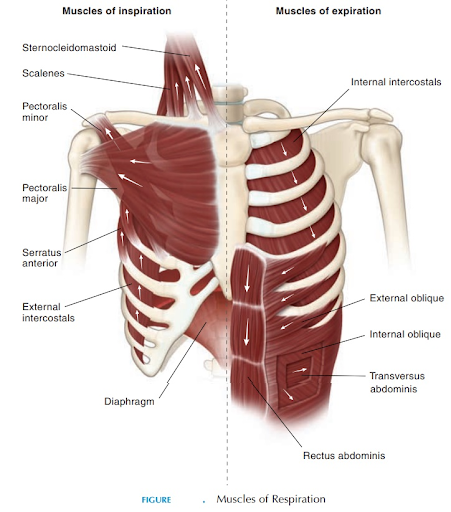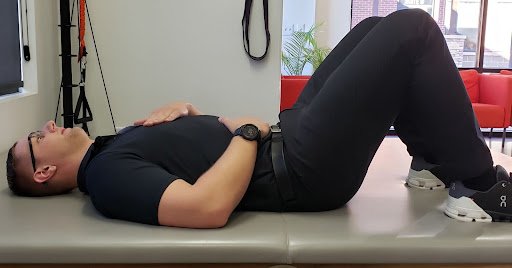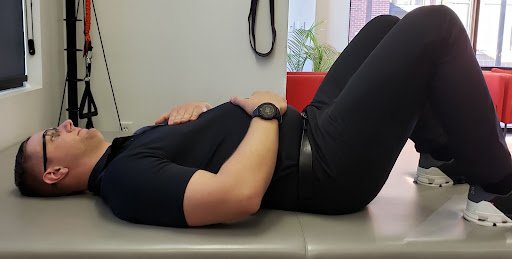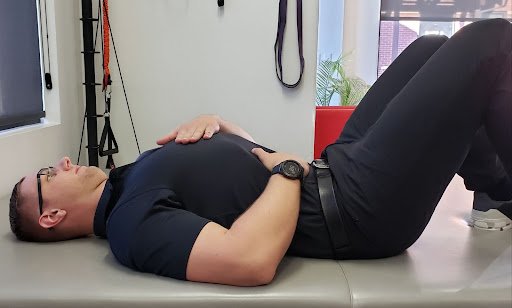Could Your Improper Breathing Be Causing Your Low Back Pain?
By Tim Cowan, DC.
03-14-21
8.5 Million! That is the average number of breaths humans take in a single year. That is almost 1,000 times in an hour. When we exercise, that number increases considerably. 577 million is the number of people with low back pain in 2017 alone!1
The problem that a majority of people face today is improper breathing. They tend to use their accessory muscles more than their diaphragms. This leads to having a weak diaphragm and overactive and painful upper back, neck, and chest muscles. This ultimately leads to chronic neck and shoulder pain AND chronic low back pain because of the lack of stabilization in the low back. We are going to focus on breathing and low back pain today.
Why do we breathe?
Breathing is one of the most important functions in the human body. Breathing has two main purposes:
- Ventilation (getting rid of unwanted CO2 “AKA carbon dioxide” in the blood)
- Oxygenation (Bringing in new oxygen into the blood for our brain and muscles)2
Functions of the Diaphragm:
The diaphragm is the single most important muscle for breathing and is therefore called the primary respiration muscle. This muscle is designed for endurance and made to function for up to 2 days straight. Secondary breathing muscles that should only be active during heavy breathing include the: scalenes, sternocleidomastoid, and pectoralis minor. See above for a picture of these muscles. These muscles are meant for strength and as a result have poor endurance. They are only designed to function for a few minutes at a time, such as being chased by a bear.
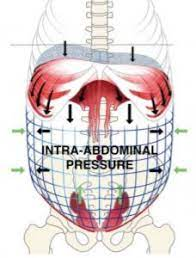 Additional Functions of the Diaphragm:
Additional Functions of the Diaphragm:
The diaphragm also has a function of maintaining intra-abdominal pressure (See picture to the right) which is critical for maintaining a stable spine. Without maintaining that pressure, the low back would move too much and would constantly experience sprains/strains, disk herniations, spondylolisthesis, and an increased rate of degeneration.3,4 Therefore, it is important that you learn how to properly breath to ensure your low back remains stable so you can maintain proper spinal alignment, stay pain-free, and function at optimal capacity.
Try this at home:
Lay down on your back with your knee’s bent to 45 degrees. Place one hand on your chest and the other hand on your belly. Breath like you normally would for about 30-60 seconds. What do you notice? If your belly hand is moving the most and your chest hand is not, CONGRATULATIONS! You are breathing correctly. If your chest hand is moving the most and your belly hand is not, then you have improper breathing mechanics. Your belly should expand out 360 degrees when you breathe in and your chest should stay put (until the last little bit of your breath). When you breathe out try to maintain a bit of pressure in your belly (Like if you are bracing for impact). Try performing this exercise at home multiple times a day to help retrain your diaphragm to function properly.
STARTING POSITION
CORRECT ENDING POSITION: Notice the belly elevation
INCORRECT ENDING POSITION: Notice the chest/rib elevation
Conclusion:
Low back pain can be caused by a number of different factors. Try working on your breathing and see if it makes a difference. Questions? Book an appointment with us at https://squareonehealth.com/schedule-appointment/ to learn more about low back treatments in Fort Collins, CO to get yourself a consultation and exam.
By Dr. Timothy Cowan D.C.
References:
Wu A, March L, Zheng X, et al. Global low back pain prevalence and years lived with disability from 1990 to 2017: estimates from the Global Burden of Disease Study 2017. Ann Transl Med. 2020;8(6):299. doi:10.21037/atm.2020.02.175
Jakoi M, Carbrey J. Respiratory System Physiology. Histology. https://histology.oit.duke.edu/MBS/Videos/Phys/Phys%208.4%20GI%20Motility/Phys%208.4%20GI%20Motility_player.html. Accessed March 12, 2022.
Kolar P, Sulc J, Kyncl M, et al. Postural function of the diaphragm in persons with and without chronic low back pain. J Orthop Sports Phys Ther. 2012;42(4):352-362. doi:10.2519/jospt.2012.3830
Novak J, Jacisko J, Busch A, et al. Intra-abdominal pressure correlates with abdominal wall tension during clinical evaluation tests. Clin Biomech (Bristol, Avon). 2021;88:105426. doi:10.1016/j.clinbiomech.2021.105426
back pain treatment in Fort Collins,

